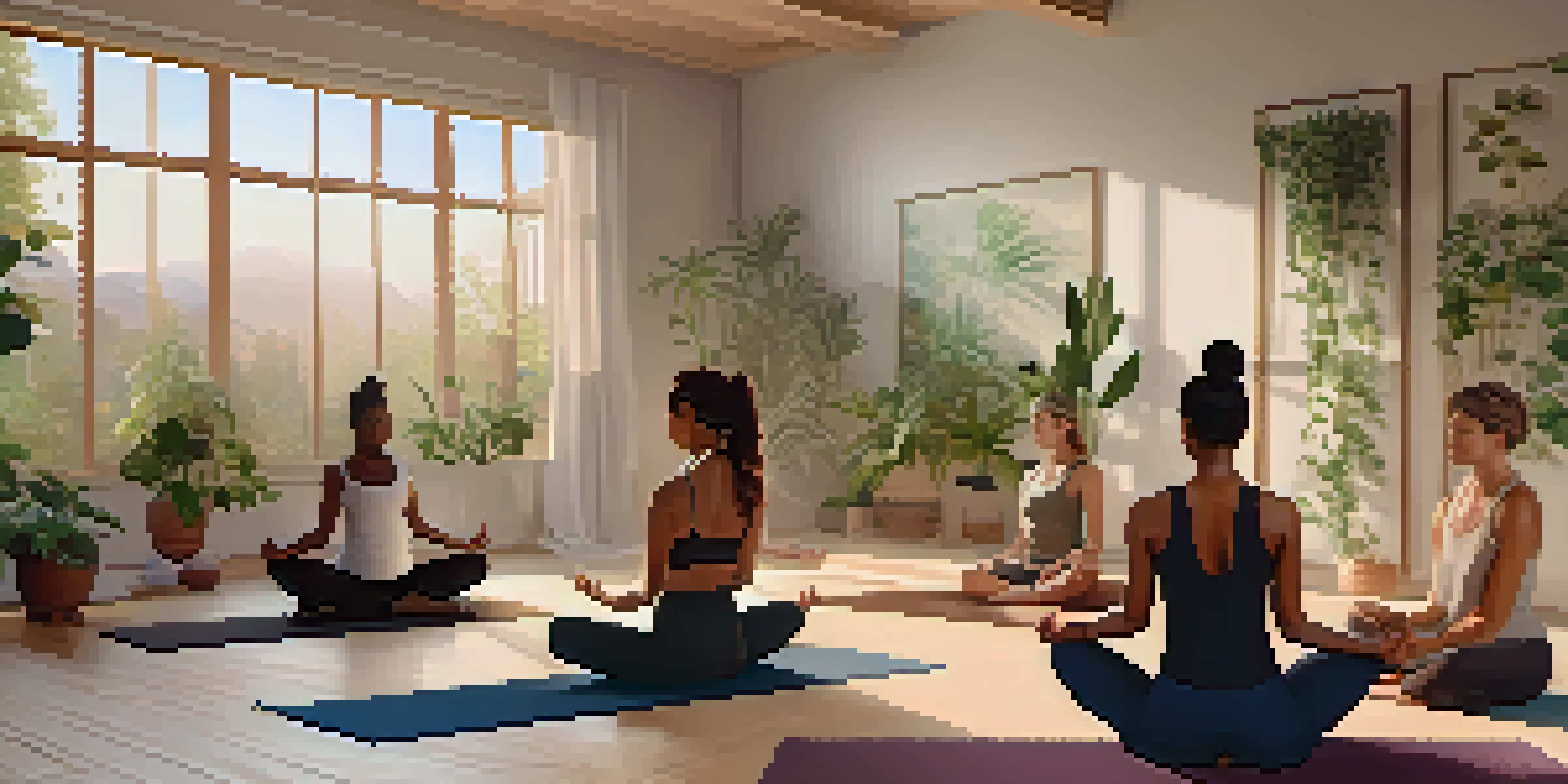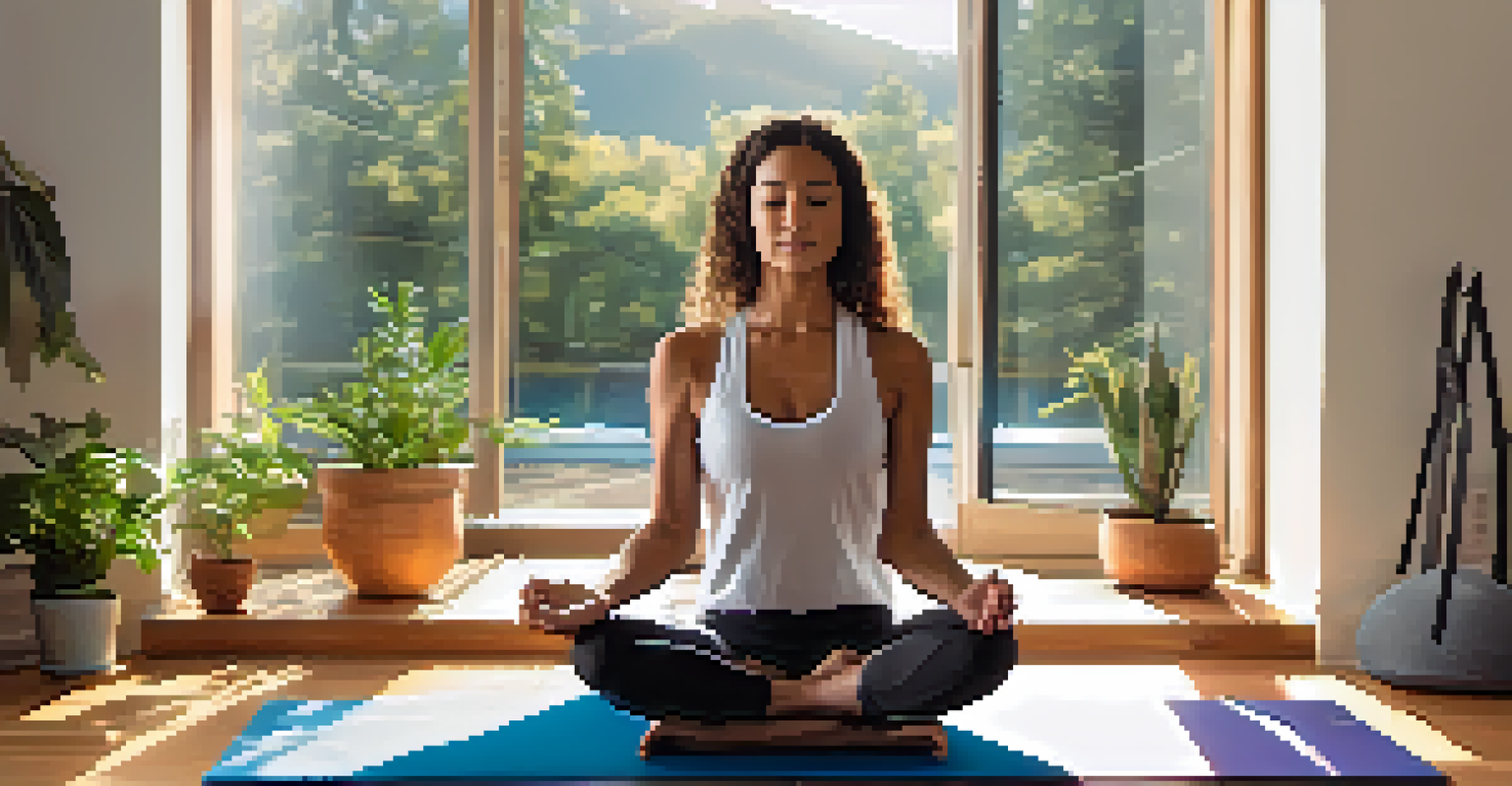Virtual Yoga Classes: Pros and Cons for Practitioners

The Rise of Virtual Yoga Classes in Today’s World
In recent years, virtual yoga classes have gained immense popularity, especially with the rise of remote work and online fitness trends. Many practitioners appreciate the convenience of rolling out their mats at home, eliminating travel time and studio fees. This shift has made yoga more accessible to individuals who may have previously hesitated to join a class due to location or time constraints.
Yoga does not always cure stress. It neutralizes it through the process of self-awareness.
With just a click, you can explore a variety of yoga styles taught by instructors from around the globe. Whether you’re looking for a calming restorative session or an invigorating vinyasa flow, there’s something for everyone. This diversity in offerings can enhance your practice, allowing you to discover new techniques and philosophies.
However, this newfound accessibility also means that practitioners are faced with countless options, which can sometimes feel overwhelming. With so many classes available online, it’s essential to find a style and teacher that resonate with you personally, ensuring a fulfilling yoga experience.
Convenience: Practice Yoga Anytime, Anywhere
One of the most significant advantages of virtual yoga classes is the convenience they offer. You can practice at your own pace and choose the time that best fits your schedule, whether it’s early morning or late at night. This flexibility allows you to integrate yoga into your daily routine more seamlessly.

Additionally, practicing from home means you can create a personalized environment that suits your needs. You can adjust the lighting, play your favorite music, or even wear your comfiest clothes without worrying about studio etiquette. This comfort can lead to a more enjoyable and relaxed practice.
Convenience of Virtual Yoga
Virtual yoga classes allow practitioners to practice anywhere, anytime, making it easier to incorporate yoga into their daily routines.
However, this convenience can sometimes lead to distractions at home. With the fridge nearby and the allure of your couch calling, it might be tempting to skip a session or cut it short. Cultivating discipline in this home environment is crucial for maintaining a consistent yoga practice.
Cost-Effectiveness: Save Money with Online Classes
Virtual yoga classes often come with a lower price tag compared to in-person sessions. Many studios offer affordable subscription plans or even free classes, making it easier for practitioners on a budget to stay active. This cost-effectiveness can open the door for more people to explore yoga without financial stress.
The body benefits from movement, and the mind benefits from stillness.
By eliminating travel costs and potential studio fees, your savings can add up significantly over time. You might find yourself investing in quality yoga props or wellness products that enhance your practice rather than spending on class passes.
Yet, it’s essential to remember that not all virtual classes are created equal. Some free or low-cost options may lack the personalized feedback and community connection that in-person classes provide. Balancing cost with quality is vital for a rewarding yoga experience.
Community Connection: Finding Your Tribe Online
Yoga is often praised for its ability to foster community and support among practitioners. Virtual classes can still provide a sense of connection, especially when instructors encourage interaction through chat features or social media. Many online platforms create spaces for participants to share their experiences, fostering a sense of belonging.
These online communities can be particularly beneficial for those who may feel isolated in their practice. You can connect with like-minded individuals, share tips, and even participate in challenges that motivate you to stay engaged.
Cost-Effective Options Available
Many online yoga classes are more affordable than in-person sessions, providing budget-friendly ways to explore and maintain a yoga practice.
However, it’s worth noting that the personal touch of in-person interactions may be lacking. Some practitioners thrive on the physical presence of others, finding inspiration in the energy of a shared space. Striking a balance between online and offline connections can enhance your overall experience.
Self-Motivation: The Key to Consistent Practice
Self-motivation is crucial when it comes to virtual yoga classes. Without the physical presence of an instructor or fellow practitioners, it can be easy to lose momentum. Establishing a routine and setting personal goals can help keep you accountable and motivated to stick with your practice.
Creating a dedicated yoga space at home can also encourage consistency. By designating a specific area for your practice, you signal to yourself that it's time to focus and engage. This simple act can help create a mindset that fosters commitment and discipline.
On the flip side, the absence of structured classes may lead some to feel less compelled to participate. Finding ways to keep your practice engaging, whether through varied class styles or setting challenges for yourself, can help maintain your enthusiasm.
Technical Challenges: The Reality of Online Classes
While virtual yoga classes offer convenience, they can also come with technical challenges. Issues like poor internet connectivity, audio problems, or video lag can disrupt your experience and make it difficult to follow along. These technical glitches can be frustrating, especially during a crucial moment in your practice.
Additionally, as much as we embrace technology, there’s a learning curve involved. Not everyone is comfortable navigating online platforms, which may deter some practitioners from fully embracing virtual classes. Familiarizing yourself with the technology beforehand can alleviate some of these concerns.
Balance Online and In-Person Classes
Combining virtual and in-person yoga sessions can enhance the overall experience by offering flexibility while maintaining community connections.
Despite these challenges, many platforms offer helpful resources and support to assist you. Engaging with communities or forums can provide tips and tricks to enhance your online experience, transforming potential setbacks into opportunities for growth.
Finding the Right Balance: Blending Virtual and In-Person Yoga
As with many things in life, finding the right balance is key when it comes to yoga practice. While virtual classes offer a wealth of benefits, incorporating in-person sessions can enrich your experience. Attending a class in a studio can provide you with personalized feedback and a sense of community that’s hard to replicate online.
Many practitioners find that a hybrid approach works best. By alternating between virtual and in-person classes, you can enjoy the flexibility of online options while still benefiting from the energy and guidance of live sessions. This blend can keep your practice fresh and exciting.

Ultimately, the choice between virtual and in-person yoga depends on your personal preferences and lifestyle. Listening to your body and assessing what works best for you will help you create a fulfilling and sustainable yoga journey.